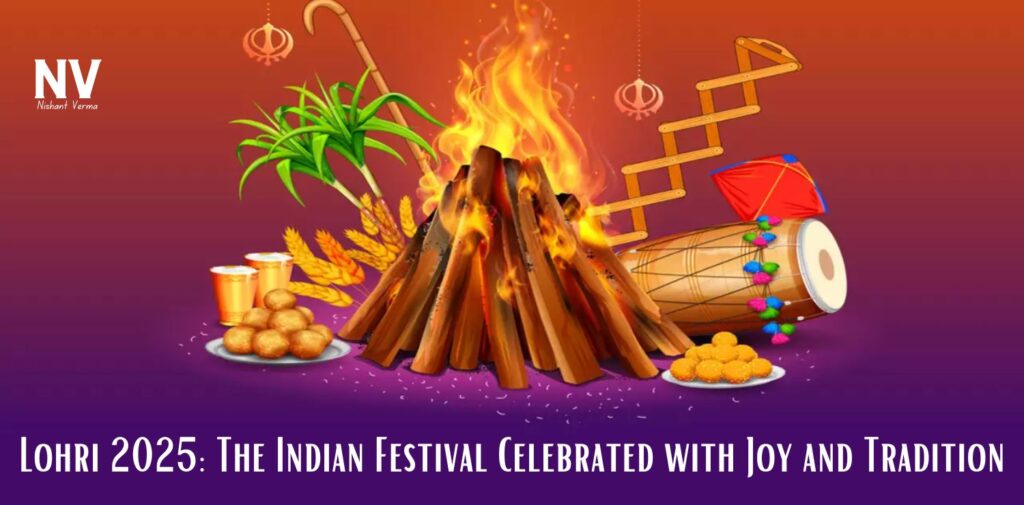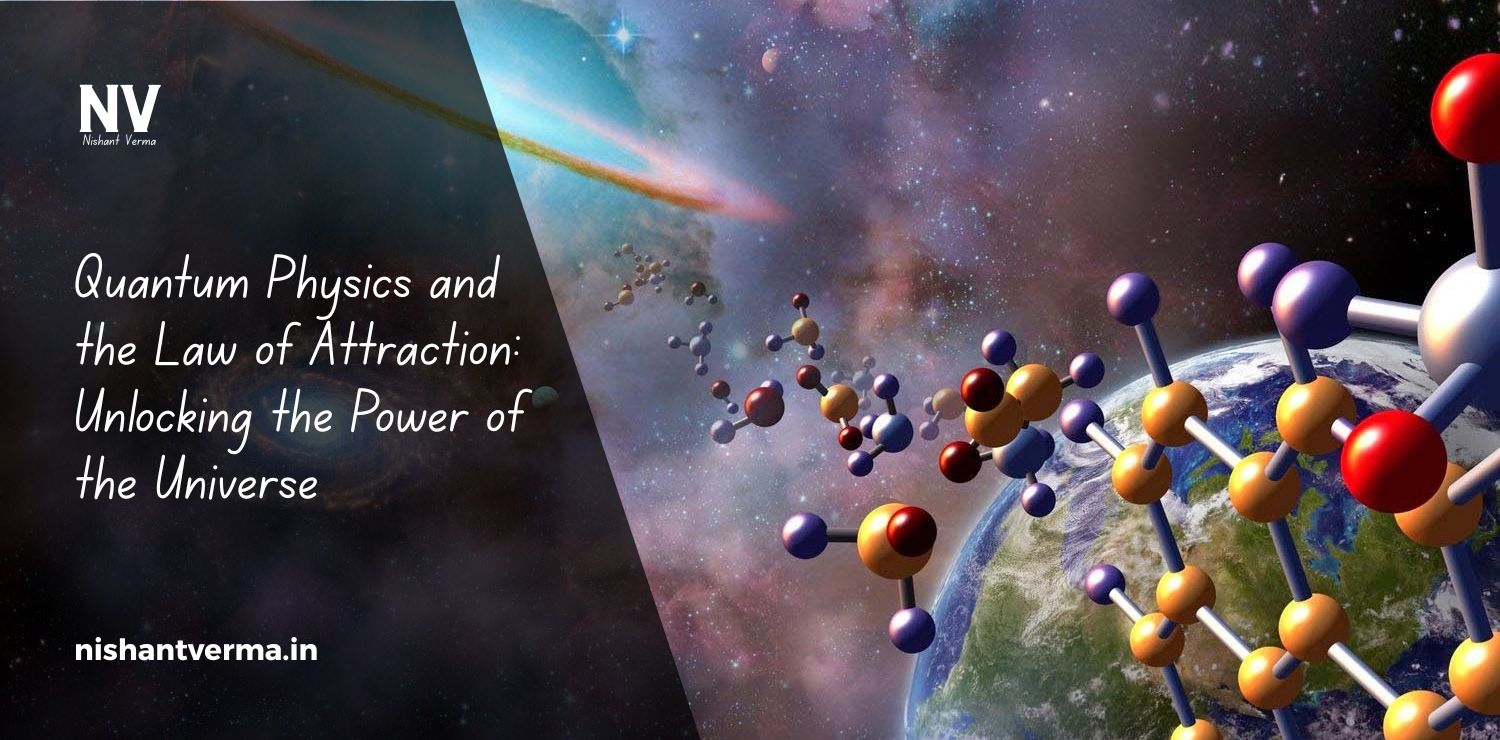Lohri is a vibrant and joyous festival that is widely celebrated in North India, especially in the state of Punjab. It marks the end of winter and the arrival of the harvest season, making it a festival of prosperity, warmth, and new beginnings. This year, Lohri will be celebrated on January 13, 2025. Lohri holds great significance in Indian culture and is a time for family gatherings, dancing, singing, and sharing delicious food. Let’s dive into the history, traditions, and ways how Lohri 2025 is celebrated in India.
What is Lohri?
Lohri is a festival that celebrates the winter solstice and the end of the cold, harsh winter months. It is primarily celebrated by people in the northern regions of India, particularly Punjab, Haryana, Himachal Pradesh, and parts of Uttar Pradesh. The festival is linked to the harvest of rabi crops, particularly sugarcane, which is harvested during this time. The festival signifies the warmth of the sun and the arrival of the new season, symbolizing hope and good fortune.
The Significance of Lohri
Lohri holds both cultural and agricultural importance. The festival is closely connected with the harvest of the rabi crops, including wheat, barley, and most importantly, sugarcane. Farmers thank God for a good harvest and pray for the well-being and prosperity of their families. The festival is not just about farming; it also brings people together to celebrate the joys of life, community, and nature.
Lohri is also a time to celebrate the sun’s transition into the Capricorn zodiac sign, marking the beginning of longer days and shorter nights. The day after Lohri, Makar Sankranti is celebrated in various parts of India, which marks the arrival of warmer days.
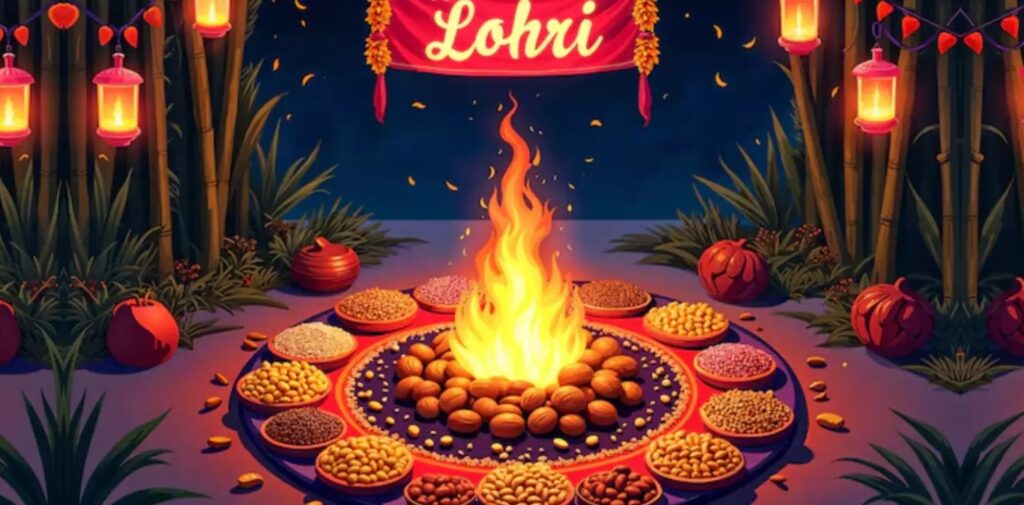
History and Origins of Lohri
The origins of Lohri are steeped in folklore. Several legends are associated with the festival, but one of the most popular ones is the story of Dulla Bhatti, a folk hero from Punjab. According to the tale, Dulla Bhatti was a brave man who fought against the Mughal rulers in the 16th century. He is said to have saved many girls from being forced into slavery and gave them a better life.
Dulla Bhatti’s heroism became a part of Lohri celebrations, and people sang folk songs about him during the festival. In these songs, children often refer to Dulla Bhatti as a figure who helped the poor and oppressed. The words “Sunder Mundriye” (a popular Lohri song) are sung to honour him.
When is Lohri Celebrated?
Lohri is celebrated every year in January. The date is fixed according to the solar calendar, and the festival typically falls on January 13 (occasionally January 14, depending on the solar position). This year, it will be celebrated on January 13, 2025.
The date of Lohri is significant because it marks the winter solstice – the shortest day and longest night of the year. After this day, the days gradually become longer, bringing the promise of warmth and growth. It is a time for people to celebrate the change of seasons and prepare for the upcoming harvest.
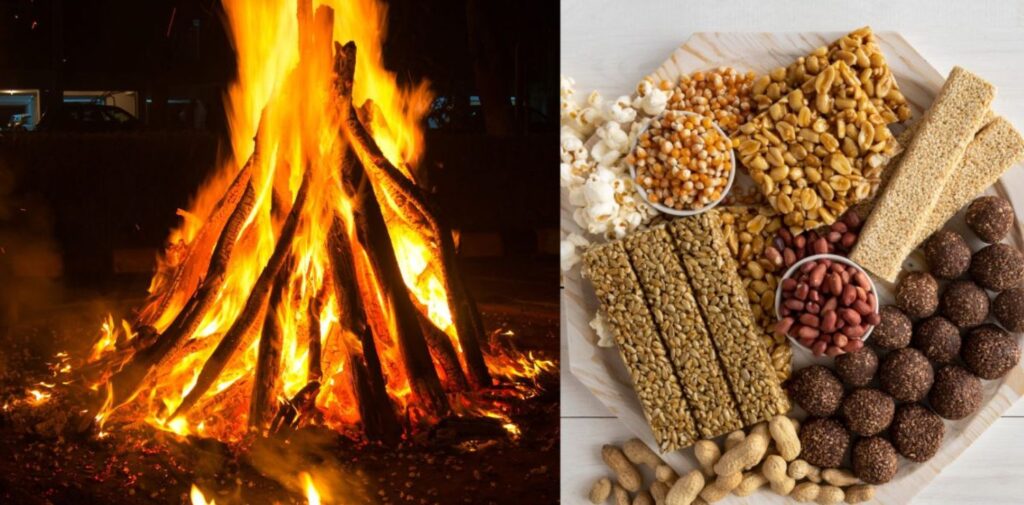
Lohri Traditions and Celebrations
Lohri is a community festival, celebrated with great enthusiasm and fervour. Families and neighbours come together to enjoy the festivities. The celebrations typically begin in the evening and continue through the night. Below are some of the main traditions and activities associated with Lohri.
- Bonfire: The Heart of Lohri: One of the most important traditions of Lohri is the lighting of the bonfire. The bonfire symbolizes the sun and the warmth it brings after the cold winter months. People gather around the bonfire, sing traditional Lohri songs, and throw offerings like sesame seeds (til), sugarcane, popcorn, and peanuts into the fire. This is believed to bring good luck and prosperity. It is a moment of joy and togetherness, with families and friends dancing around the fire.
- Bhangra and Gidda: Dance and Music: The festival of Lohri is incomplete without traditional dance and music. In Punjab, people perform Bhangra, a lively and energetic folk dance, while women perform Gidda, a graceful and lively dance. These dances are performed around the bonfire, and the rhythmic beats of the dhol (drum) fill the air, making the atmosphere joyful and festive. Dancers wear colourful traditional attire, and the lively movements reflect the joy and spirit of the occasion.
- Lohri Songs and Folk Music: Lohri is also famous for its traditional songs. The most famous song is “Sunder Mundriye”, which is sung during the celebrations. The song narrates the tale of Dulla Bhatti and his heroic deeds. Children go door to door singing these songs in exchange for sweets or small gifts. Singing folk songs adds an extra layer of charm and tradition to the festival, keeping the spirit of Lohri alive for generations.
- Sharing Sweets: Til and Gajak: Food plays an important role in Lohri celebrations. People prepare and share various traditional sweets made from sesame seeds (til) and jaggery (gur), which are believed to bring health and prosperity. Popular sweets like tilgul (til and jaggery balls), gajak, and rewrite are commonly distributed among friends and family during Lohri. These sweets are not only delicious but are also considered to have health benefits, especially during the cold winter months.
- Wearing New Clothes: During Lohri, people often wear new clothes as a symbol of new beginnings. This custom signifies the end of the old and the start of the new, with the harvest season bringing new opportunities and prosperity. Families often buy new clothes for their children, and there’s a general feeling of renewal and positivity that comes with the festival.
- Bonfire Offerings: As the bonfire is the centre of the Lohri celebration, people throw various food items like corn kernels, sugarcane sticks, and nuts into the fire as offerings. This is believed to be a way to express gratitude for the harvest and to seek blessings for the upcoming year. The warmth of the fire also symbolizes the warmth of family and community coming together to celebrate life and nature.
Lohri and Its Connection with Agriculture
Lohri is deeply rooted in agricultural practices and is a celebration of the harvest season. Farmers thank nature for providing them with a bountiful harvest, especially the sugarcane crop, which is harvested around this time. In rural areas, the festival is a time for farmers to offer prayers and seek blessings for a good crop in the coming year.
In addition to its agricultural significance, Lohri also represents a time for renewal and hope. It marks the beginning of the end of winter and the welcoming of longer, warmer days. This change in the season is a reminder of nature’s cycles, growth, and the continuous process of life.
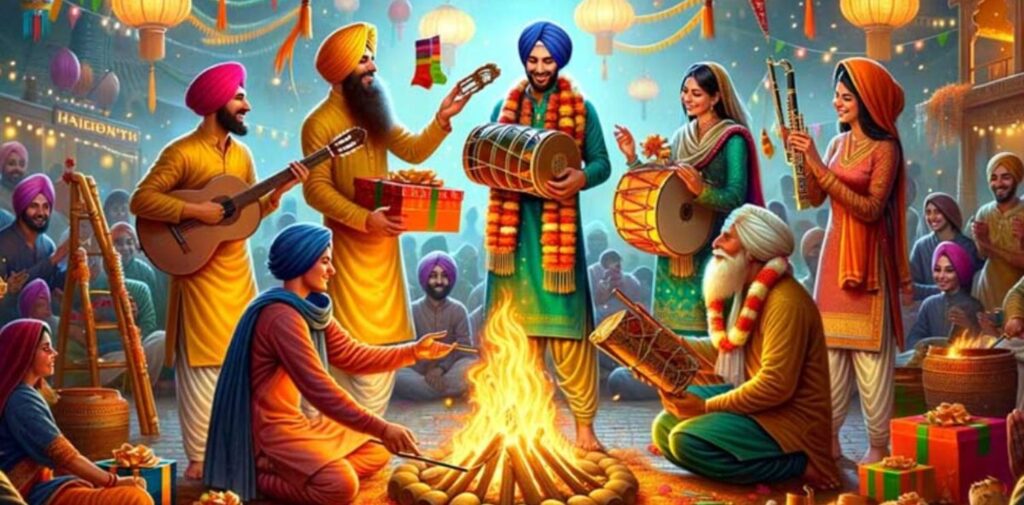
Lohri Around India
Though Lohri is primarily celebrated in Punjab, its spirit is also observed in other parts of India, including Haryana, Himachal Pradesh, and Uttar Pradesh. In these regions, people celebrate the festival in their unique way but still follow the core traditions, including lighting a bonfire, dancing, and feasting on traditional sweets.
In states like Maharashtra, the festival is observed as Makar Sankranti, and in Bengal, it is celebrated as Poush Sankranti. Despite different names and regional variations, Lohri’s essence of celebrating the harvest and the sun’s warmth remains the same across India.
Conclusion: Lohri 2025
Lohri is more than just a festival; it is a celebration of nature, community, and the joyous spirit of life. It marks the transition from winter to spring, welcoming warmth and new beginnings. It brings families and communities together through bonfires, dance, music, and delicious food. As you celebrate Lohri this year, may it bring happiness, prosperity, and good health to you and your loved ones.
So, on January 13, 2025, gather your family and friends, light the bonfire, sing the songs, dance to the beats, and make beautiful memories. Celebrate the warmth of the season, the goodness of harvest, and the joy of being together. Happy Lohri to all!

